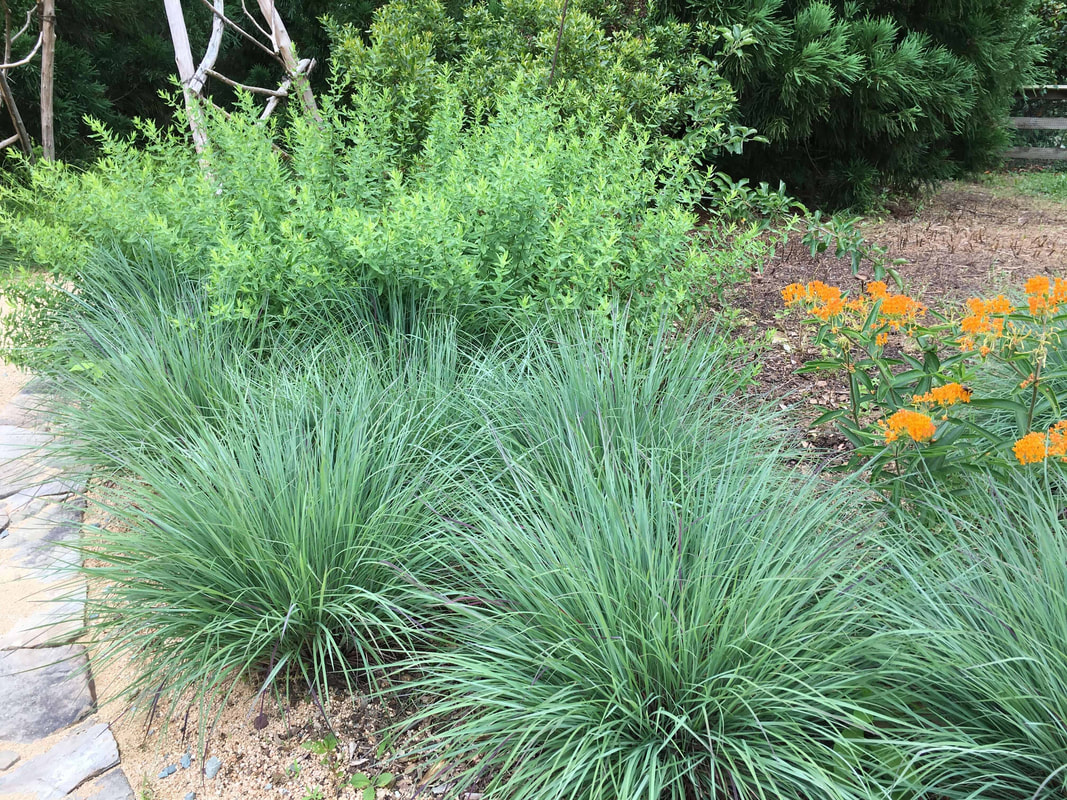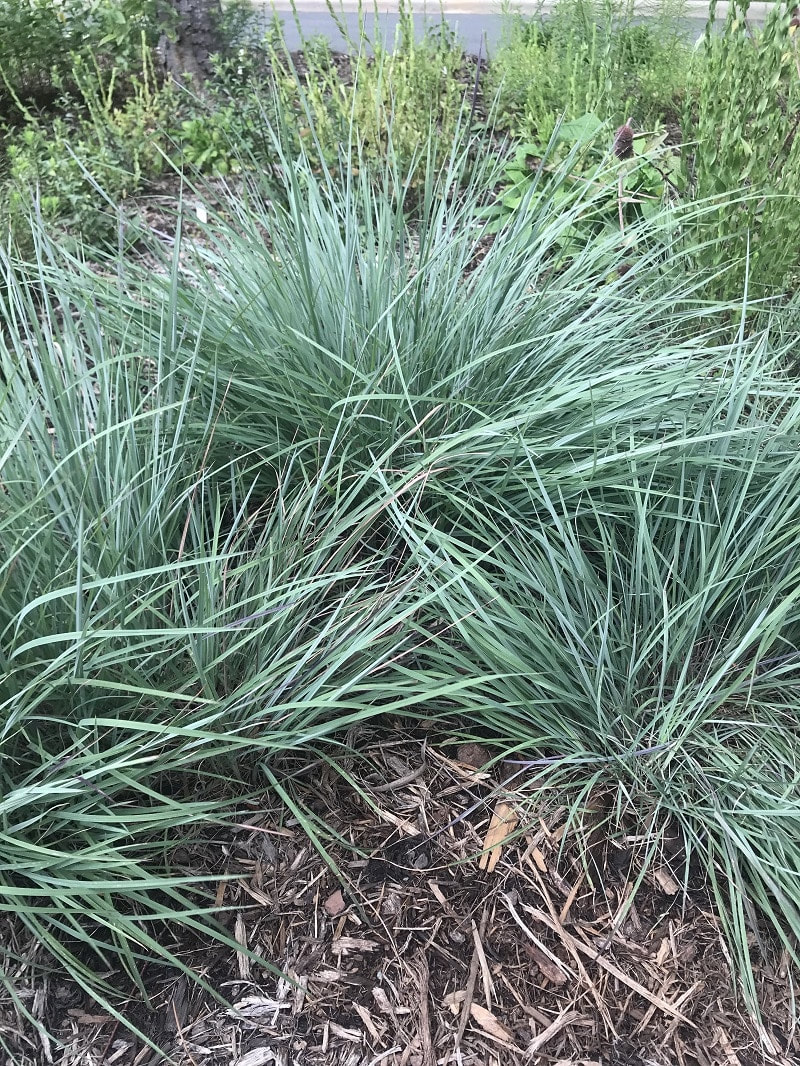Little Blue Stem
Schizachyrium scoparium
Little Bluestem is a highly ornamental native grass prized for its blue-green leaf color and upright form. The foliage provides excellent color all season-long and creates the perfect backgrop for prairie flowers. Densely mounded, Little Bluestem reaches a height of 3 feet by autumn, when it turn a striking reddish-bronze, bearing illuminated tufted seeds. The rigid clumps can withstand snow and rain, allowing the reddish grass stems to remain upright for most of the winter.
This prairie grass excels in dry sandy soils and combines well with all prairie flowers. It is fairly adaptable, but not recommended for damp sites or heavy clay soils. Little Bluestem is a host plant for numerous skipper butterflies including the Cobweb Skipper, Dusted Skipper, Ottoe Skipper, Delaware Skipper, Crossline Skipper and Swarthy Skipper.

